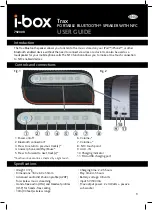
TP-6071 3/00
16
Section 5 Cooling System
5.2 Closed Heat Exchanger
In a closed cooling system, seawater circulates through
separate chambers within the heat exchanger to cool
the engine coolant.
The seawater then mixes with
engine exhaust and ejects out of the exhaust outlet. See
Section 1.4 for coolant capacity, thermostat and
pressure cap ratings.
Note: Coolant solution.
A coolant solution of 50%
ethylene glycol provides freezing protection to
--37
°
C (--34
°
F) and overheating protection to
129
°
C (265
°
F). A coolant solution with less than
50% ethylene glycol may not provide adequate
freezing and overheating protection. A coolant
solution with more than 50% ethylene glycol can
cause engine or component damage. Do not use
alcohol or methanol antifreeze or mix them with
the specified coolant.
Consult the engine
manufacturer’s operation manual for engine
coolant specifications.
5.3 Check and Fill Coolant
Note:
Do not add coolant to a hot engine.
Adding
coolant to a hot engine can cause the cylinder
block or cylinder head to crack. Wait until the
engine has cooled.
Maintain the coolant level in the coolant recovery tank at
approximately 1/4 full. Before filling the cooling system,
close all petcocks and tighten all hose clamps. Use a
solution of 50% ethylene glycol and 50% clean,
softened water to inhibit rust/corrosion and prevent
freezing.
Add coolant, as necessary, to the coolant
recovery tank. Periodically check the coolant level on
closed systems by removing the pressure cap. Do not
rely solely on the level in the coolant recovery tank. Add
fresh coolant until level is just below the overflow tube
opening.
5.4 Flush and Clean Cooling
System
For optimum protection, drain, flush, and refill the
cooling system at the interval listed in the service
schedule.
Pay special attention to the coolant level. When refilling
the cooling system, allow time for complete refill of the
engine water jacket.
Check the coolant level as
described in Section 5.3.
Flush and Clean Procedure:
1. Remove the pipe plug water drain located at the
heat exchanger and completely drain the system.
2. Remove the pressure cap to make draining easier.
3. Drain, clean, and flush the cooling system and the
coolant recovery tank with clean water.
4. Replace the pipe plug water drain.
5. Fill the cooling system with recommended coolant.
6. Replace the pressure cap.
5.5 Pressure Cap
Closed heat exchanger systems utilize a pressure cap
to raise the boiling point of the coolant, enabling higher
operating temperatures. If the cap leaks, replace it with
a cap of the same rating. Find the pressure cap rating in
Section 1.4, Cooling.
Содержание 11.5EFOZ
Страница 2: ......
Страница 4: ...TP 6071 3 00 Table of Contents...
Страница 10: ...TP 6071 3 00 VI Safety Precautions and Instructions Notes...
Страница 18: ...TP 6071 3 00 6 Section 1 Specifications Notes...
Страница 26: ...TP 6071 3 00 14 Section 4 Fuel System Notes...
Страница 33: ...TP 6071 3 00 21 Section 6 Controller Troubleshooting 229938 Figure 6 2 Sequence of Operation Wiring Diagram...
Страница 50: ...TP 6071 3 00 38 Section 7 Generator Troubleshooting Notes...
Страница 60: ...TP 6071 3 00 48 Section 9 Generator Disassembly Reassembly Notes...
Страница 66: ...TP 6071 3 00 54 Section 10 Wiring Diagrams Notes...
Страница 67: ...TP 6071 3 00 55 Section 10 Wiring Diagrams 10 6 Wiring Diagram 4 Lead 229937 C...
Страница 68: ...TP 6071 3 00 Section 10 Wiring Diagrams 56 10 7 Wiring Diagram 12 Lead 229938 A...
















































